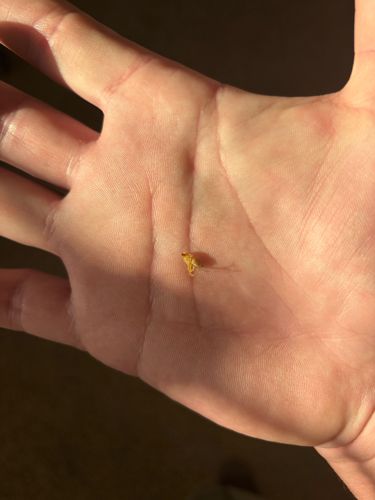Aphid; Aphid exuviae (shed skin)
Scientific Name: Aphidoidea (Superfamily)
Order & Family: Hemiptera, Aphididae
Size: Typically 1-10 mm. The object in the image appears to be an exuvia, or shed skin, which maintains the size and shape of the aphid at its last instar.

Natural Habitat
Found on various plants, especially new growth, leaves, and stems, both indoors and outdoors. They thrive in temperate regions.
Diet & Feeding
Aphids are phytophagous, meaning they feed on plant sap. They use their piercing-sucking mouthparts to extract phloem sap from plants.
Behavior Patterns
Aphids reproduce rapidly, often parthenogenetically (without mating), leading to large colonies. They are relatively sedentary but can disperse via winged forms. They frequently shed their exoskeletons (exuviae) as they grow, which can often be found clinging to plants. Some species form symbiotic relationships with ants, which protect them in exchange for honeydew (a sugary waste product).
Risks & Benefits
Risks: Aphids are significant agricultural and garden pests. They can cause stunted growth, wilting, yellowing, and leaf curl. They also transmit plant viruses and secrete honeydew, which can lead to sooty mold growth on plants. Benefits: They serve as a food source for many beneficial insects (e.g., ladybugs, lacewings, hoverfly larvae) and birds, playing a role in food webs.
Identified on: 9/18/2025